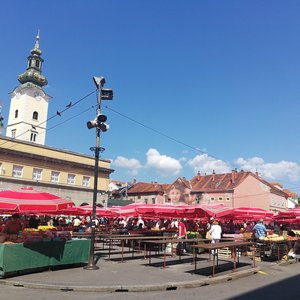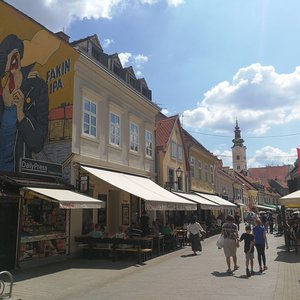Belgrade and Zagreb
Belgrade and Zagreb were our last cities in the Balkans and we were sad to leave all of the delicious food behind, but looking forward to visiting friends.
Belgrade
From Sarajevo we took a bus to Belgrade, the capital of Serbia. Belgrade, like Istanbul, is one of those cities where you instantly know you’re going to like it. Especially for Markus, the atmosphere is reminiscent of Vienna, but with a bit more grit instead of imperial. While Belgrade doesn’t necessarily have the beauty of Vienna or the allure of sights and things to do for tourists, it did strike us as a wonderful place to live. It’s filled with a cafe culture, or kafana, that’s hard to beat. These kafanas are much more similar to a bistro or pub, serving not only delicious coffee, but also beer and wine and yummy food. They lined many of the tree lined streets adding to the gritty bohemian atmosphere of the city. We decided to take a walking tour during one of the days and as we said, the city may lack the sights, but the tour was really informative and provided us with a lot of history. The guide also offered us his homemade rakia–warming us from the inside on a rainy day.
Zagreb
After Belgrade we departed for our last destination in the Balkans–Zagreb, Croatia. The main reason for ending our Balkan tour in Zagreb is that we scheduled ourselves an overnight train from there to Zurich, Switzerland. However, we had a few days in the city before this departure. Friends of ours from America, Chelsea and Matt, also met us in Zagreb as they decided to also take the same train with us to Zurich. While on the surface Zagreb doesn’t seem to offer a lot to do (our Airbnb host in Belgrade called it boring and a pass) we enjoyed meandering around the city and stopping for beer and snacks. One of the highlights for us was visiting the Museum of Broken Relationships. The museum is composed of items that represent importance to the person who donated it to the museum as a reflection of a relationship that failed. Along with the item is a caption to explain the significance. Around the corner from the museum is St. Marks’ Church–the highlight is the colorful tiles on the roof with the medieval coat of arm’s of Croatia.

























